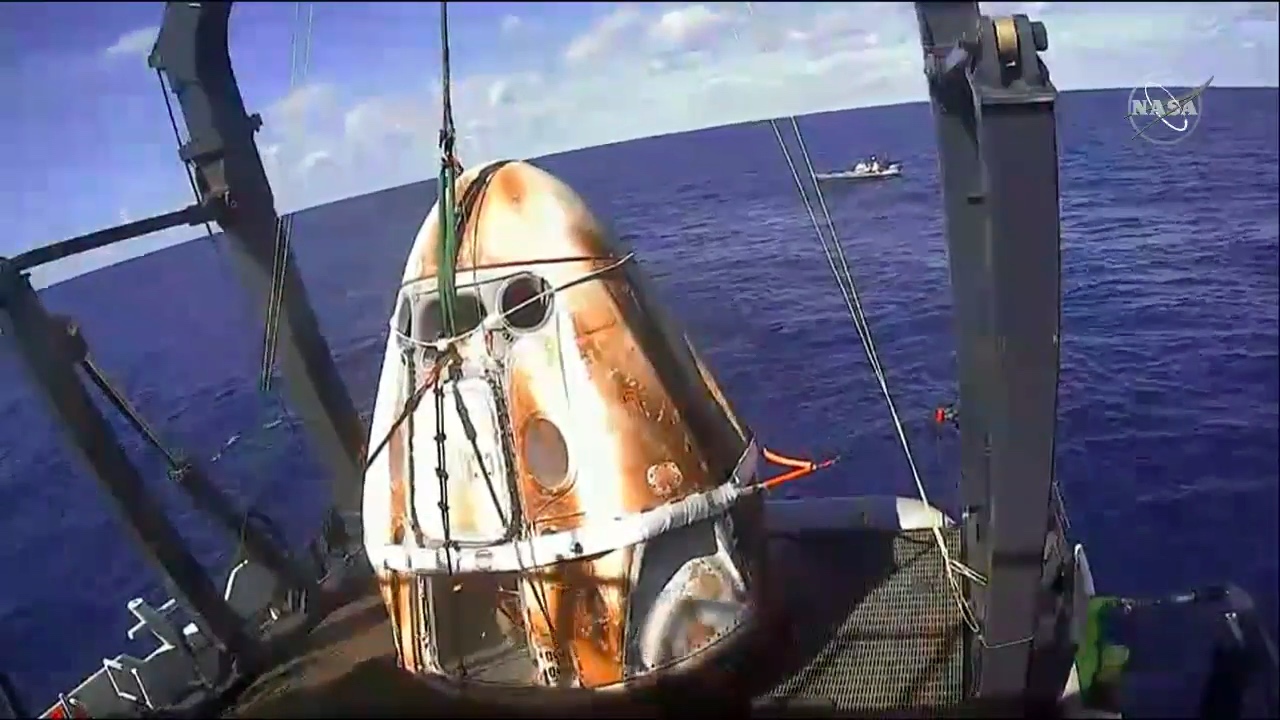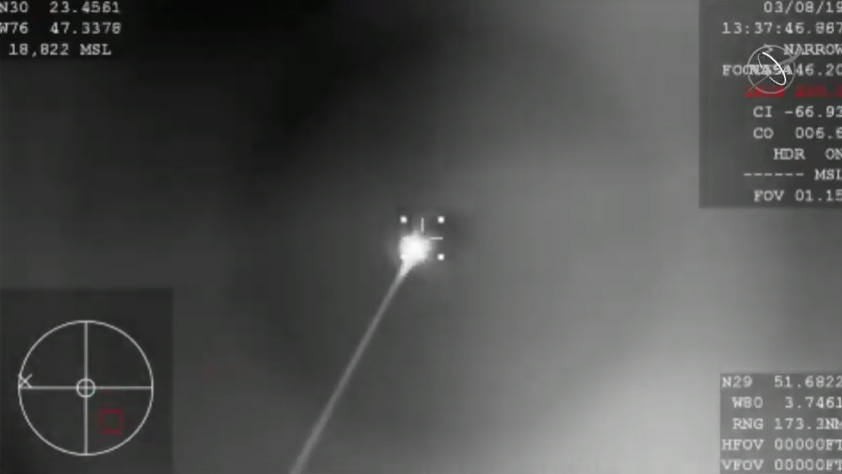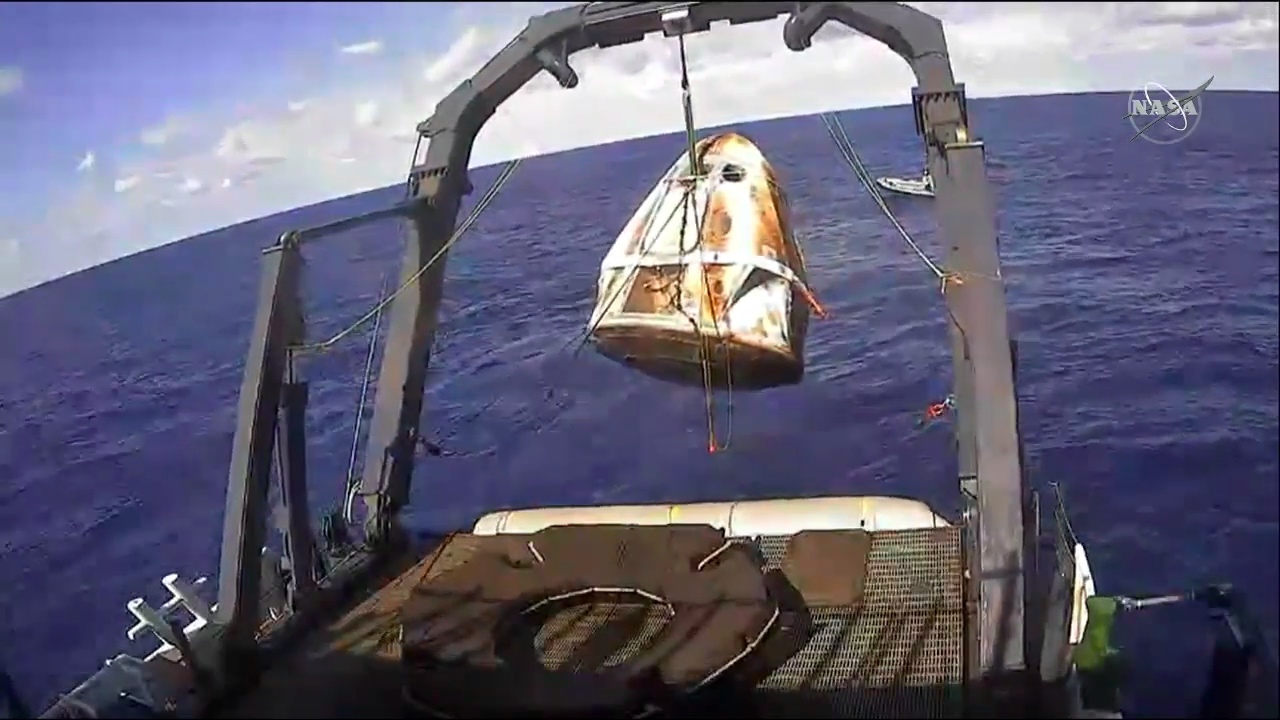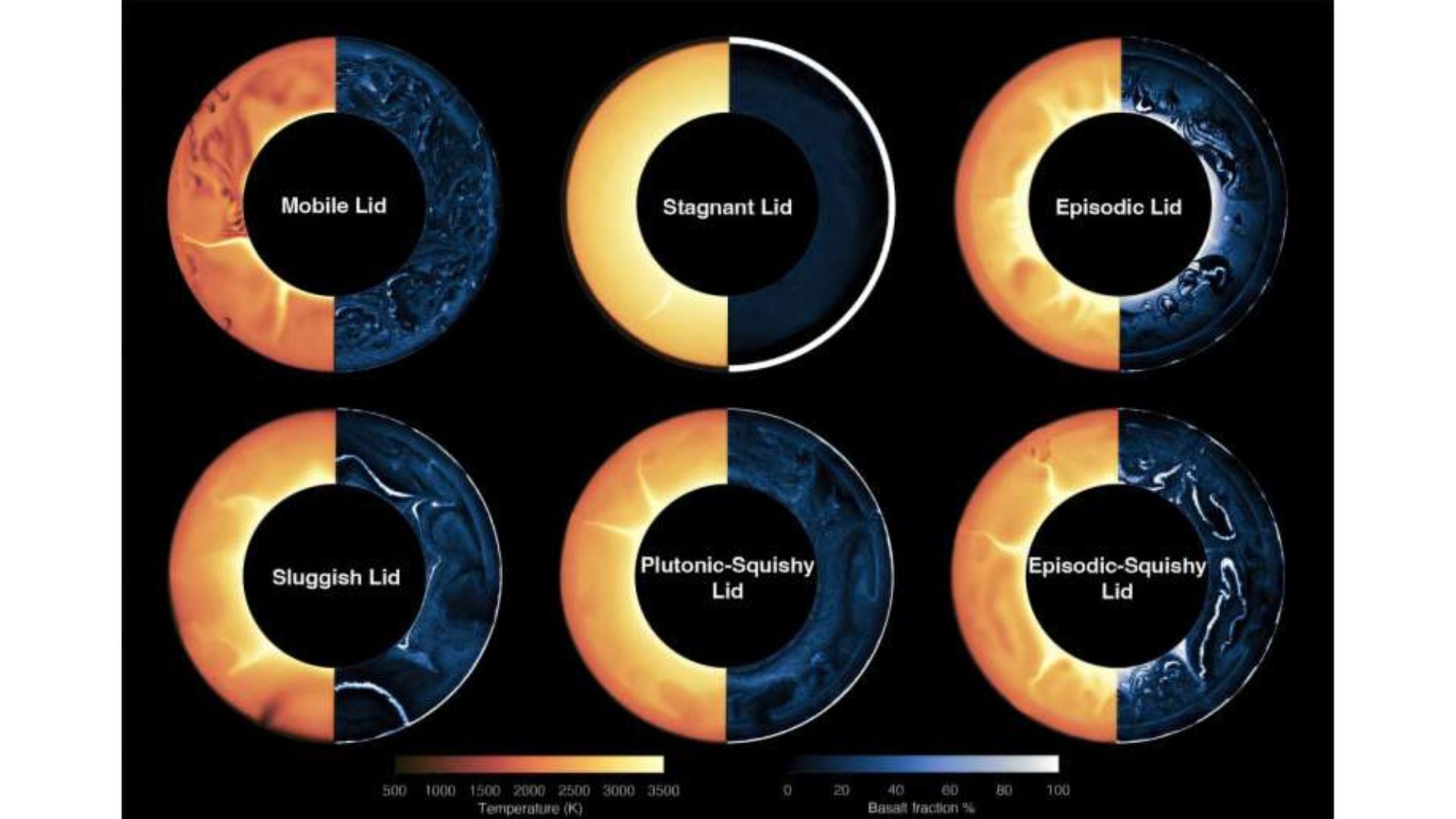SpaceX's Crew Dragon Looks Just Like a Toasted Marshmallow After Fiery Re-Entry
When SpaceX launched its first Crew Dragon spacecraft to the International Space Station last week, the gleaming white vehicle soared into space on its maiden voyage. Now, Crew Dragon is back, and it doesn't look so new.
SpaceX's Crew Dragon returned to Earth today (March 8) with a smooth splashdown in the Atlantic Ocean, just off the east coast of Florida, ending a six-day test flight to the International Space Station. When the spacecraft undocked from the space station earlier in the day, it was still a clear white. But now, after experiencing the fiery heat of re-entry, not so much.
"You might also notice that the thermal protection system on the outside of Dragon, if you were watching during launch, was a pristine white," said SpaceX engineer Kate Tice with the company's build and flight reliability team during live splashdown commentary. "There was plasma, of course, as it re-entered through Earth's atmosphere, so we have a lovely toasted marshmallow there sitting in the nest of our recovery ship."
"It's just really cool to see that evidence of return back to Earth," Tice added.
Related: SpaceX's Historic Crew Dragon Demo-1 Mission in Pictures



Tice is referring to the searing hot plasma of super-heated gases that buffet a spacecraft during atmospheric re-entry. SpaceX's Crew Dragon, like all returning spacecraft, has a protective heat shield on its base to bear the brunt of that heat, but the white thermal protection layers along its side look like they got a bit cooked. And that's only to be expected.
In fact, Elon Musk said the scorch marks on Crew Dragon weren't even from the hottest point of re-entry, which is what the spacecraft's main heat shield on its bottom successfully withstood.
Breaking space news, the latest updates on rocket launches, skywatching events and more!
"Atmospheric entry at 17,000 mph is like a meteor & will vaporize steel," Musk wrote on Twitter alongside a photo of the toasted Crew Dragon. "Burn marks below are on the cold side. Main heatshield [sic] on bottom."
Atmospheric entry at 17,000 mph is like a meteor & will vaporize steel. Burn marks below are on cold side. Main heatshield on bottom. https://t.co/GRs7j751R4March 8, 2019
SpaceX has seen similar scorching on its Falcon 9 rocket boosters after they touch down on the company's drone ships or ground-based landing pads. SpaceX's cargo Dragon vehicles also show evidence of fiery re-entry. The first of those vehicles hangs today inside the company's Hawthorne, California rocket factory.
Crew Dragon is SpaceX's first spacecraft built to carry astronauts for NASA under the agencys' Commercial Crew program. This flight, called Demo-1, was an uncrewed test mission to see if the spacecraft will be ready for its astronauts. For Demo-1, Crew Dragon carried a dummy astronaut named Ripley, named after a character from the "Alien" films, in a SpaceX spacesuit to record what a human astronaut might experience.
In addition to SpaceX's Crew Dragon, NASA also plans to fly astronauts on the CST-100 Starliner built by Boeing this year. That spacecraft is scheduled to fly its own uncrewed test flight in April. SpaceX and Boeing must also successfully perform uncrewed tests of their vehicles' in-flight abort systems before launching astronauts into space.
- SpaceX Dragon Crew Demo-1 Test Flight: Full Coverage
- Take a Walk Through SpaceX's Crew Dragon Spaceship
- The Latest News on SpaceX, Crew Dragon and More
Email Tariq Malik at tmalik@space.com or follow him @tariqjmalik. Follow us @Spacedotcom and Facebook.

Tariq is the award-winning Editor-in-Chief of Space.com and joined the team in 2001. He covers human spaceflight, as well as skywatching and entertainment. He became Space.com's Editor-in-Chief in 2019. Before joining Space.com, Tariq was a staff reporter for The Los Angeles Times covering education and city beats in La Habra, Fullerton and Huntington Beach. He's a recipient of the 2022 Harry Kolcum Award for excellence in space reporting and the 2025 Space Pioneer Award from the National Space Society. He is an Eagle Scout and Space Camp alum with journalism degrees from the USC and NYU. You can find Tariq at Space.com and as the co-host to the This Week In Space podcast on the TWiT network. To see his latest project, you can follow Tariq on Twitter @tariqjmalik.
